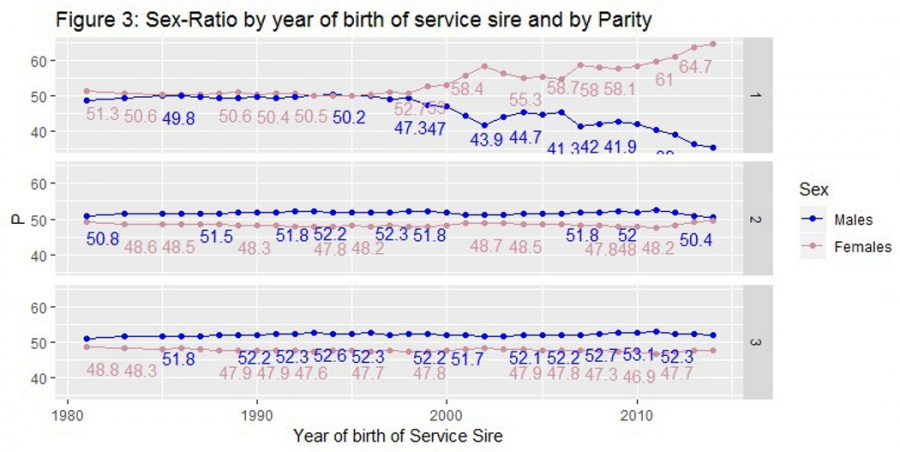With the April triannual evaluations, improvements in calving trait evaluations are being made to provide more accurate predictions that reflect current dairy management. The updates are based on findings from a comprehensive review by Dr. Stefano Biffani. These modifications are expected to result in decreasing trends in the calving traits and reranking of animals in April, especially in daughter calving ease (DCE) and daughter stillbirth (DSB).
Net merit has included a calving ability sub-index (CA$) since 2006, which incorporates service sire calving ease, daughter calving ease, service sire stillbirth and daughter stillbirth. Phenotypically, calving ease is reported on a five-point scale with 1 being no difficulty with calving and 5 being extremely difficult calving. Stillbirth is reported as three categories where 1 represents a live calf, 2 represents a calf born dead, and 3 represents a calf that was born alive but died within 48 hours. For genetic evaluations, stillbirth scores 2 and 3 are combined.
The calving traits differ from most other traits that CDCB evaluates because they are categorical and not continuous. To account for this, they are evaluated with sire/maternal grandsire (MGS) threshold models.
Recently, Dr. Stefano Biffani thoroughly investigated CDCB’s calving trait evaluations, including the phenotypic editing procedureand the current models. One discovery was that herds reporting only easy calvings (i.e., calving score 1) were not being excluded from the evaluation. The consistent, across-time reporting of only one category is a sign of bad data quality, in most cases. Furthermore, extreme categories (calving scores 4 and 5) were found to have low frequencies in the data. Most noticeably, a trend in the sex ratio of calves was identified, especially in first lactation animals (Figure 1). Some – but not all – of the increased reporting of females can be attributed to the use of sexed semen, as that trend started before sexed semen was readily available. It was also determined that parity was not currently included in the definition of contemporary groups for the calving traits.

Based on the findings by Dr. Biffani, the following updates will be implemented for calving traits beginning with the April 2020 triannual evaluation. Genetic parameters were re-estimated and will be updated on all calving traits.
- Any herds reporting more than 95% of their calvings as category 1 (no difficulty) will be excluded from the phenotypic data used for genetic
- Calving ease categories 4 and 5 will be combined into a single
- Estimated birth years will be used for missing MGS birthdate
- For both calving ease and stillbirth models, parity will be included in the random contemporary group effect and an interaction effect of parity-sex-birth year of sire and MGS will be
The changes to the editing criteria and modeling parameters have been tested and compared with previous results. Test results were also validated in the last two Interbull test runs. Interbull trend validation procedures showed a better performance of calving traits across lactations and across time, and better correlation with other countries.
The bottom line: Nationally, decreasing trends in the calving traits will be observed, largely the result of accounting for the recent trend in sex ratio. This means that reranking of animals will be observed, especially in daughter calving ease (DCE) and daughter stillbirth (DSB). The improvements made to the calving trait evaluations will provide better predictions that more accurately reflect the current dairy industry.









